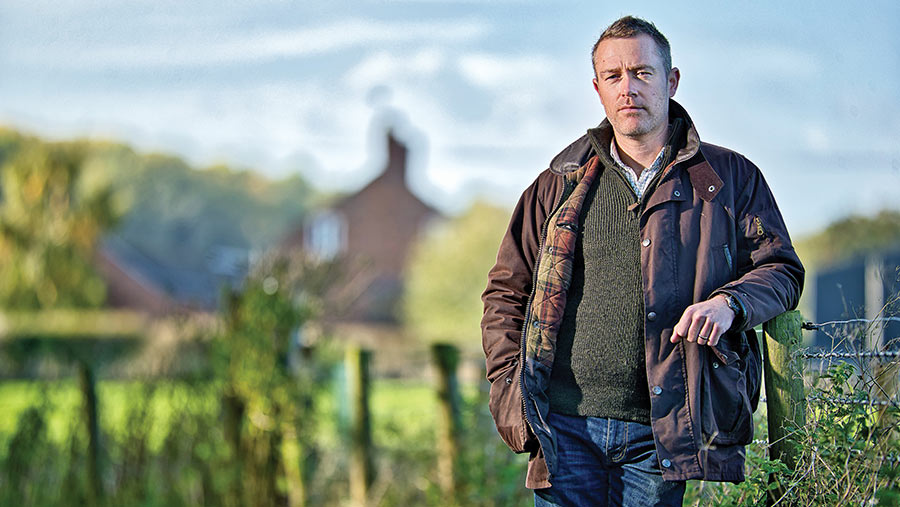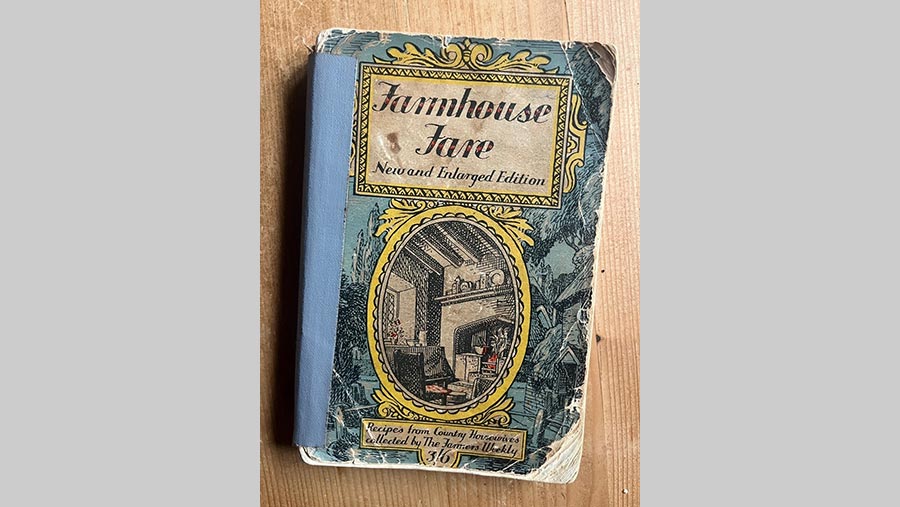Will’s World: Brawn, brains and other vintage vittles
 © Richard Stanton
© Richard Stanton Just before Christmas in 1935, Farmer’s Weekly published Farmhouse Fare, a book composed entirely of recipes sent to the magazine over the years by readers.
The first edition sold more than 310,000 copies, and the next two, published in 1945 and 1950, sold many more.
One of the 1945 editions was bought by my grandmother, who paid 3s 6d (just under 18p in decimal currency) for it.
Judging by the well-thumbed pages, and the many notes added in her handwriting, she certainly got her money’s worth from it.
See also: 12 great affordable Christmas gifts for farming families
How I wish I could have a slice of her chocolate cake and a cup of tea with her now.
Even if you’re not particularly into cooking, the book is a joy to read from a social history point of view. It starts off with an intro from Mary Day of Farmers Weekly, who explains the premise of it all.

© Will Evans
“From farmhouse and cottage kitchens all over the British Isles, women have sent us these recipes.
“Some they have invented as they cooked for their own families; some were an inheritance from their mothers and grandmothers.
“But these are dishes which have stood the test of cooking not in model kitchens, or by professional cooks, but by coal and oil and peat and wood fires – as well as by gas and electricity – in the homes of our own countryside.”
Talk about evocative, I can practically smell bread baking just reading the words.
By the book
It’s further added to by the rather formidable-sounding Mrs Arthur Webb, who states:
“We who have gathered and selected these recipes from every county in the kingdom are proud to present the country housewife as she is seldom seen – at work in her kitchen, busy with the tools of her trade.
“Few of us will not learn a great deal by looking over her shoulder.”
I have no basis for this assumption at all, but I’m sure Mrs Arthur Webb would have given you a sound thrashing with a ladle if you dared to say anything less than complimentary about her oxtail soup.
But it’s the recipes themselves that really captured my interest, primarily because many of them just aren’t seen on our tables anymore.
Old Devonshire rabbit brawn, anyone?
“Start off by putting two pig’s feet in a saucepan with cold water, cover and boil gently before adding a rabbit which has been prepared and soaked in salt water for half an hour to whiten the flesh.”
You get the idea.
Maybe you’d prefer a plate of braised sheep’s tongues? Or if you don’t fancy that tonight, a nice slice of lamb-tail pie, made from severed tails with the wool scalded off, and stewed with carrot and onion. Delicious.
Or perhaps Somerset rook pie with figgy pastry is more to your liking? “Bake the rooks, which must have been skinned, using only the legs and breast, as all other parts are bitter.”
The Wurzels never mentioned chowing down on this regional delicacy with their cider, did they.
Waste not, want not
I jest, of course. But it’s a reminder not only of how much our diets have changed over the years, but also that meat was scarce back then, and wasting anything was seen as a terrible sin.
I’m also sure that our grandmothers would turn their noses up at much of the highly processed and unhealthy rubbish we put into our bodies these days.
So, with that in mind, I’m off to cook a calf’s head pie for my children’s dinner. Maybe I’ll wait to tell them what it is until after they’ve eaten it, though.
